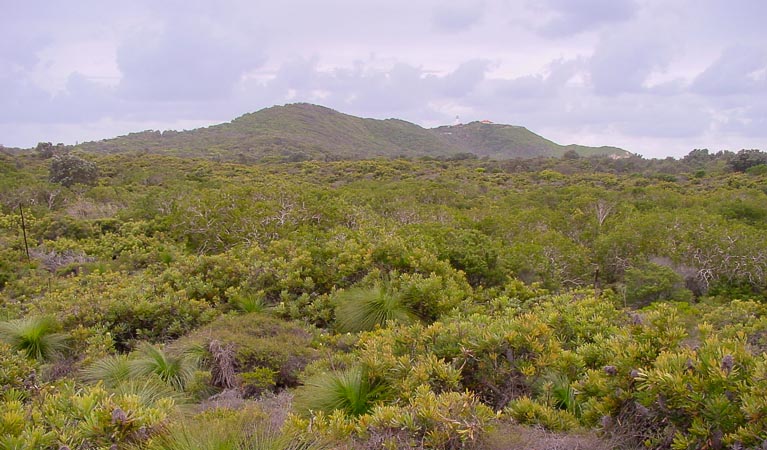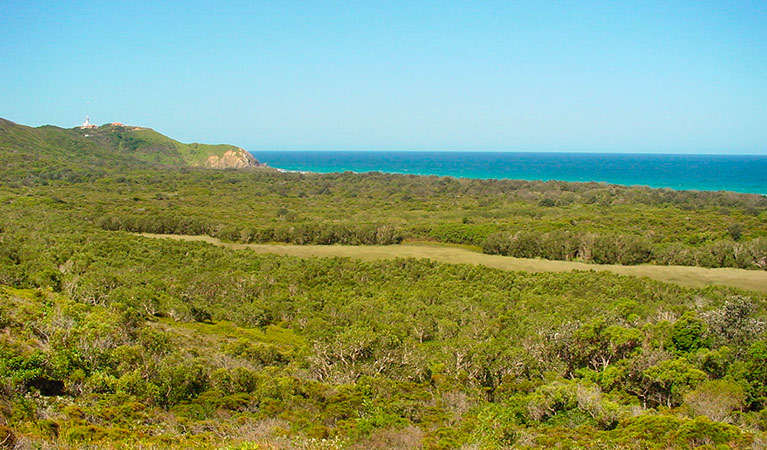Tandem hang gliding in Byron Bay with Pro Flyte
Arakwal National Park
Learn more
Learn more about why this park is special
Tandem hang gliding in Byron Bay with Pro Flyte is in Arakwal National Park. Here are just some of the reasons why this park is special:
Animals on the move

Arakwal may be small from the outside, but its borders hold some important habitat for threatened plant species like the creatively-named stinking crypotocarya, and dark greenhood. Keen nature enthusiasts will find much of interest; bring the magnifying glass, but be careful not to damage what you see. The reserve is also a temporary home to a range of nomadic and migratory animals, which means it's never quite the same in any given season. During autumn and winter, for example, the growing, flowering and fruiting season attracts birds, flying foxes and micro bats. Then there are the humpback whales, drifting past out to sea as they cycle annually between Queensland and the freezing waters of the Antarctic.
This is Aboriginal land

The reserve falls within the custodial boundaries of Bundjalung nation, with prime importance for the local Arakwal People who lend their name to the national park. The Bundjalung of Byron Bay (Arakwal) Peoples' connection to the reserve was recognised in 2001, with the signing of an Indigenous Land Use Agreement between the Bundjalung of Byron Bay (Arakwal) People and the NSW State Government.
Plants and animals protected in this park
Animals
-

White-bellied sea eagle (Haliaeetus leucogaster)
White-bellied sea eagles can be easily identified by their white tail and dark grey wings. These raptors are often spotted cruising the coastal breezes throughout Australia, and make for some scenic bird watching. Powerful Australian birds of prey, they are known to mate for life, and return each year to the same nest to breed.
-

Superb fairy wren (Malurus cyaneus)
The striking blue and black plumage of the adult male superb fairy wren makes for colourful bird watching across south-eastern Australia. The sociable superb fairy wrens, or blue wrens, are Australian birds living in groups consisting of a dominant male, mouse-brown female ‘jenny wrens’ and several tawny-brown juveniles.
-

Koala (Phascolarctos cinereus)
One of the most renowned Australian animals, the tree-dwelling marsupial koala can be found in gum tree forests and woodlands across eastern NSW, Victoria and Queensland, as well as in isolated regions in South Australia. With a vice-like grip, this perhaps most iconic but endangered Australian animal lives in tall eucalypts within a home range of several hectares.
-

Humpback whale (Megaptera novaeangliae)
The humpback whale has the longest migratory path of any mammal, travelling over 5000km from its summer feeding grounds in Antarctica to its breeding grounds in the subtropics. Its playful antics, such as body-rolling, breaching and pectoral slapping, are a spectacular sight for whale watchers in NSW national parks.
Look out for...
White-bellied sea eagle
Haliaeetus leucogaster

White-bellied sea eagles can be easily identified by their white tail and dark grey wings. These raptors are often spotted cruising the coastal breezes throughout Australia, and make for some scenic bird watching. Powerful Australian birds of prey, they are known to mate for life, and return each year to the same nest to breed.
